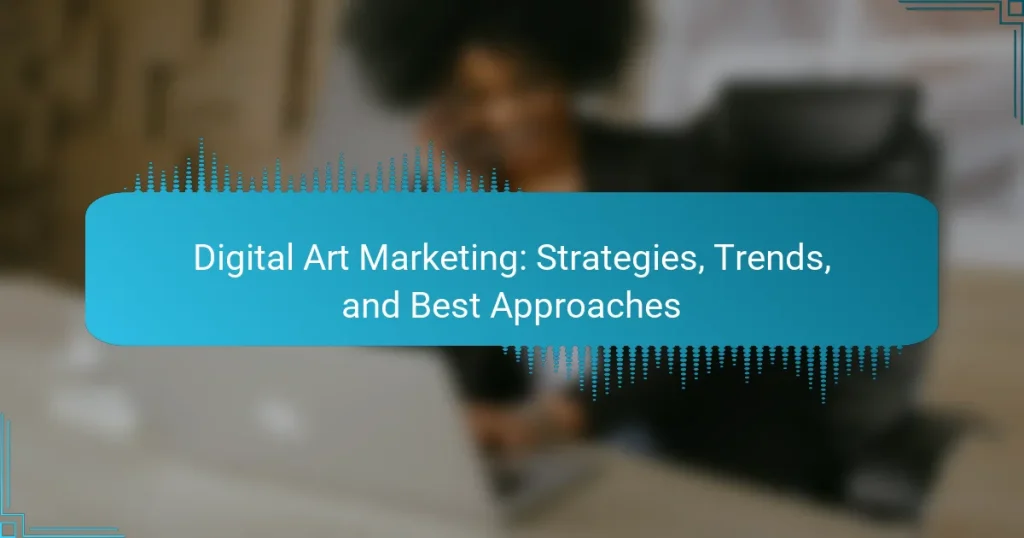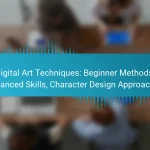In the ever-evolving landscape of digital art marketing, artists must focus on building a robust online presence and engaging meaningfully with their audiences. By leveraging social media platforms and embracing emerging trends like augmented reality and NFTs, artists can enhance their visibility and create new sales opportunities. Effective strategies not only help in showcasing artwork but also in establishing a personal brand that resonates with potential buyers.
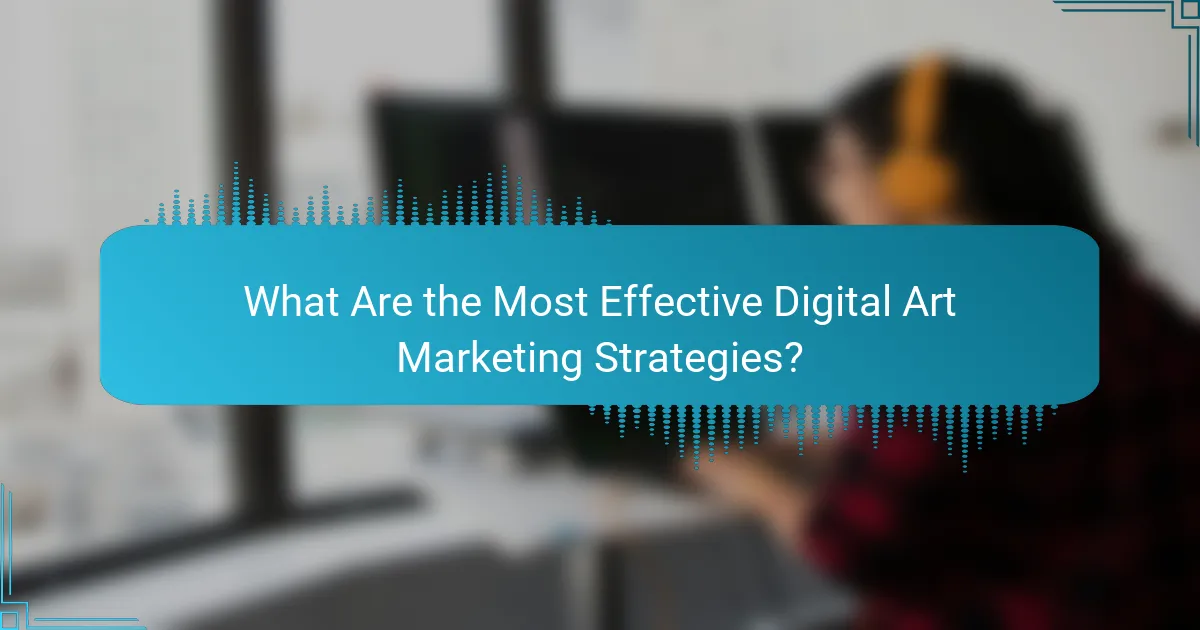
What Are the Most Effective Digital Art Marketing Strategies?
The most effective digital art marketing strategies focus on building a strong online presence, engaging with audiences, and leveraging partnerships. These approaches help artists reach potential buyers and establish their brand in a competitive market.
Social Media Engagement
Social media engagement is crucial for digital artists to connect with their audience and showcase their work. Platforms like Instagram, Facebook, and TikTok allow artists to share their creations, behind-the-scenes content, and interact with followers through comments and direct messages.
To maximize engagement, artists should post consistently, use relevant hashtags, and participate in art challenges or collaborations. Creating visually appealing content and utilizing stories or reels can also enhance visibility and attract new followers.
Email Marketing Campaigns
Email marketing campaigns are an effective way to maintain direct communication with fans and potential customers. By building an email list, artists can share updates, exclusive offers, and new artwork directly to their subscribers’ inboxes.
To create successful campaigns, artists should segment their audience based on interests and preferences, personalize messages, and include clear calls-to-action. Regular newsletters can keep subscribers engaged and informed about upcoming events or releases.
Influencer Collaborations
Collaborating with influencers can significantly boost an artist’s visibility and credibility. By partnering with individuals who have a strong following in the art community, artists can reach a wider audience and gain new fans.
When selecting influencers, consider their style, audience demographics, and engagement rates. A well-planned collaboration, such as a joint giveaway or a feature on an influencer’s platform, can create buzz and drive traffic to the artist’s website or social media.
Content Marketing
Content marketing involves creating valuable content that attracts and engages an audience. For digital artists, this can include blog posts, tutorials, or videos that showcase their techniques and insights into the art-making process.
By providing useful information, artists can establish themselves as experts in their field and build a loyal following. Regularly updating content and optimizing it for search engines can further enhance visibility and drive organic traffic.
SEO Optimization
SEO optimization is essential for ensuring that an artist’s website ranks well in search engine results. This involves using relevant keywords, optimizing images, and ensuring that the site is user-friendly and mobile-responsive.
Artists should conduct keyword research to identify terms potential buyers might use when searching for digital art. Regularly updating content and obtaining backlinks from reputable sites can also improve search rankings and increase visibility.
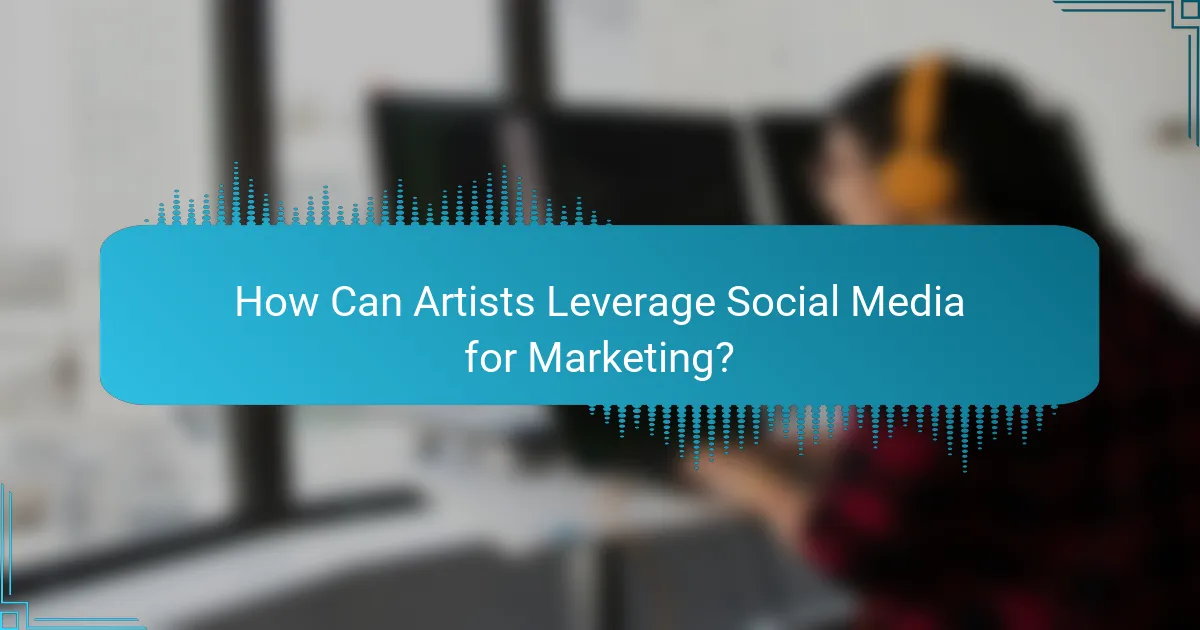
How Can Artists Leverage Social Media for Marketing?
Artists can effectively leverage social media for marketing by using these platforms to showcase their work, connect with audiences, and build a personal brand. Engaging with followers and sharing content that resonates with their target market can significantly enhance visibility and sales opportunities.
Platform Selection
Choosing the right social media platform is crucial for effective marketing. Artists should consider where their target audience spends most of their time; for example, Instagram is popular for visual art, while TikTok can be great for short, engaging videos. Facebook and Twitter can also be useful for community building and sharing updates.
It’s beneficial to focus on 2-3 platforms rather than spreading efforts too thin. This allows for deeper engagement and a more tailored content strategy. Researching platform demographics can help in making informed decisions.
Content Types
Artists should diversify their content types to keep their audience engaged. High-quality images of artwork, behind-the-scenes videos, and time-lapse creation processes are effective ways to showcase talent. Additionally, sharing stories about the inspiration behind pieces can create a personal connection with followers.
Live sessions, polls, and interactive posts can also encourage audience participation. Regularly updating content and experimenting with formats can help identify what resonates best with the audience.
Engagement Techniques
Engagement is key to building a loyal following on social media. Artists should respond to comments and messages promptly, fostering a sense of community. Hosting giveaways or contests can also boost interaction and attract new followers.
Collaborating with other artists or influencers can expand reach and introduce work to new audiences. Regularly analyzing engagement metrics can help refine strategies and improve future posts.

What Trends Are Shaping Digital Art Marketing in 2023?
In 2023, digital art marketing is heavily influenced by augmented reality experiences, NFT integration, and personal branding. These trends are reshaping how artists engage with audiences and monetize their work, creating new opportunities for visibility and sales.
Augmented Reality Experiences
Augmented reality (AR) experiences allow artists to create immersive environments that enhance the viewing of their digital art. By using AR, artists can engage potential buyers by enabling them to visualize how a piece would look in their own space, increasing the likelihood of purchase.
To implement AR, artists can use platforms like Instagram or Snapchat, which support AR filters. Consider creating an interactive gallery where users can explore different artworks in a virtual setting. This approach not only captivates the audience but also encourages social sharing, further amplifying reach.
NFT Integration
Integrating non-fungible tokens (NFTs) into digital art marketing has become a vital strategy for artists looking to monetize their work. NFTs provide a way to authenticate ownership and provenance, which can significantly increase the value of digital art.
Artists should explore platforms like OpenSea or Rarible to mint and sell their NFTs. It’s essential to understand the associated costs, such as gas fees, which can vary widely. Additionally, promoting NFT drops through social media channels can create buzz and drive sales.
Personal Branding
Personal branding is crucial for digital artists to differentiate themselves in a crowded market. Establishing a strong personal brand helps artists connect with their audience on a deeper level, fostering loyalty and trust.
To build a personal brand, artists should consistently share their creative process, engage with followers, and maintain a cohesive visual style across platforms. Utilizing platforms like TikTok or YouTube for behind-the-scenes content can enhance visibility and attract a larger audience. Regularly updating a professional portfolio website can also serve as a central hub for showcasing work and driving sales.
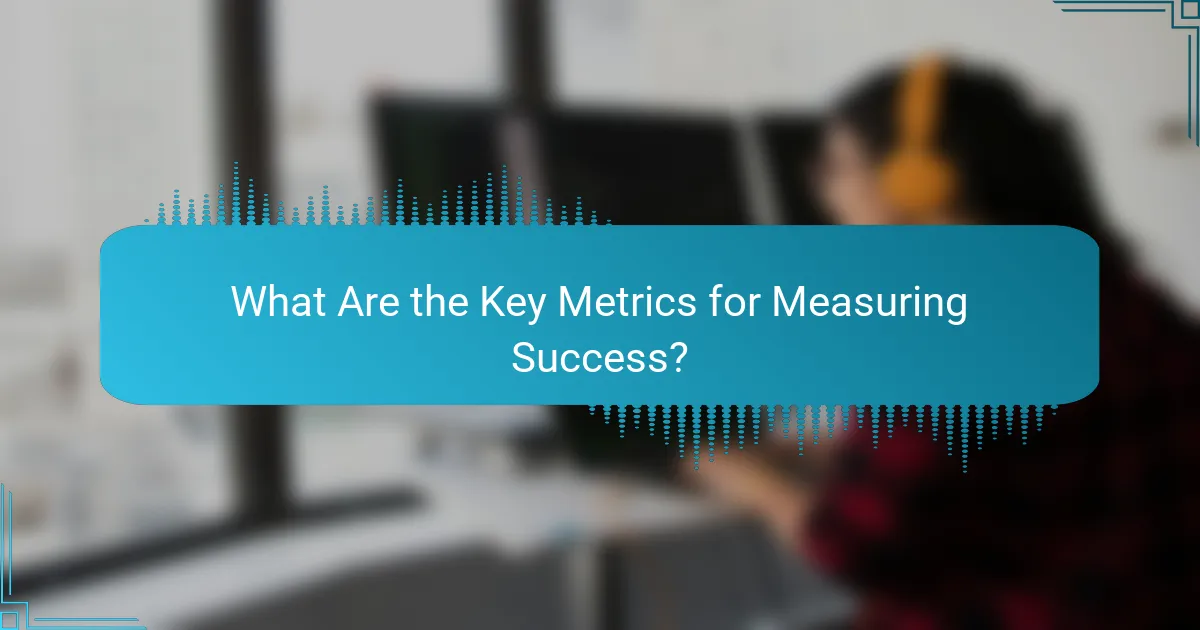
What Are the Key Metrics for Measuring Success?
The key metrics for measuring success in digital art marketing include engagement rates, conversion rates, and return on investment (ROI). These metrics provide insights into how well your marketing efforts resonate with your audience and contribute to your overall business goals.
Engagement Rates
Engagement rates reflect how actively your audience interacts with your digital art content. This can include likes, shares, comments, and time spent viewing your work. High engagement rates indicate that your audience finds your art compelling and relevant.
To calculate engagement rates, divide the total interactions by the total followers or views, then multiply by 100 to get a percentage. Aim for engagement rates of around 1-5% for social media platforms, as this range is generally considered healthy.
Conversion Rates
Conversion rates measure the percentage of visitors who take a desired action, such as purchasing a piece of art or signing up for a newsletter. This metric is crucial for understanding how effectively your marketing strategies turn interest into sales.
To improve conversion rates, focus on optimizing your website and marketing funnels. Simple changes like clear calls to action, streamlined checkout processes, and targeted email campaigns can significantly enhance conversion rates, ideally aiming for 2-5% in the art market.
Return on Investment
Return on investment (ROI) assesses the profitability of your marketing efforts by comparing the revenue generated to the costs incurred. A positive ROI indicates that your marketing strategies are financially effective.
To calculate ROI, subtract the total marketing costs from the total revenue generated, then divide by the total marketing costs and multiply by 100. Aiming for an ROI of at least 100% is a good benchmark, meaning your marketing efforts are covering costs and generating profit.

What Tools Can Enhance Digital Art Marketing Efforts?
Several tools can significantly boost digital art marketing efforts by streamlining processes and enhancing visibility. Utilizing the right platforms and software can help artists reach their target audience more effectively and manage their marketing strategies efficiently.
Social Media Platforms
Social media platforms like Instagram, Facebook, and Pinterest are essential for digital art marketing. They allow artists to showcase their work visually and engage directly with potential buyers. Regularly posting high-quality images, behind-the-scenes content, and engaging stories can build a loyal following.
Each platform has its strengths; for instance, Instagram is highly visual, while Facebook offers community-building features. Artists should tailor their content to fit the unique characteristics of each platform to maximize engagement.
Email Marketing Tools
Email marketing tools such as Mailchimp or Constant Contact are effective for maintaining communication with fans and customers. These platforms enable artists to send newsletters, updates on new works, or exclusive offers directly to their audience’s inboxes.
Building a subscriber list is crucial. Artists can encourage sign-ups through their websites or social media, offering incentives like discounts or free downloads. Regularly scheduled emails can keep the audience engaged and informed.
Website Builders
Website builders like Wix or Squarespace allow artists to create professional-looking portfolios without extensive technical skills. A well-designed website serves as a central hub for showcasing artwork, sharing artist statements, and facilitating sales.
When creating a website, artists should focus on user experience, ensuring that navigation is intuitive and that the site is mobile-friendly. Including an online store can also streamline the purchasing process for customers.
Analytics Tools
Analytics tools such as Google Analytics provide valuable insights into website traffic and user behavior. Understanding which marketing efforts drive the most traffic can help artists refine their strategies and focus on what works best.
Artists should regularly review their analytics data to identify trends, such as peak traffic times or popular content. This information can guide future marketing campaigns and content creation.
Graphic Design Software
Graphic design software like Adobe Photoshop or Canva is crucial for creating eye-catching promotional materials. These tools enable artists to design social media posts, email headers, and website graphics that reflect their unique style.
Investing time in learning these tools can enhance the quality of marketing materials. Artists should consider using templates to maintain consistency across platforms while saving time on design work.
